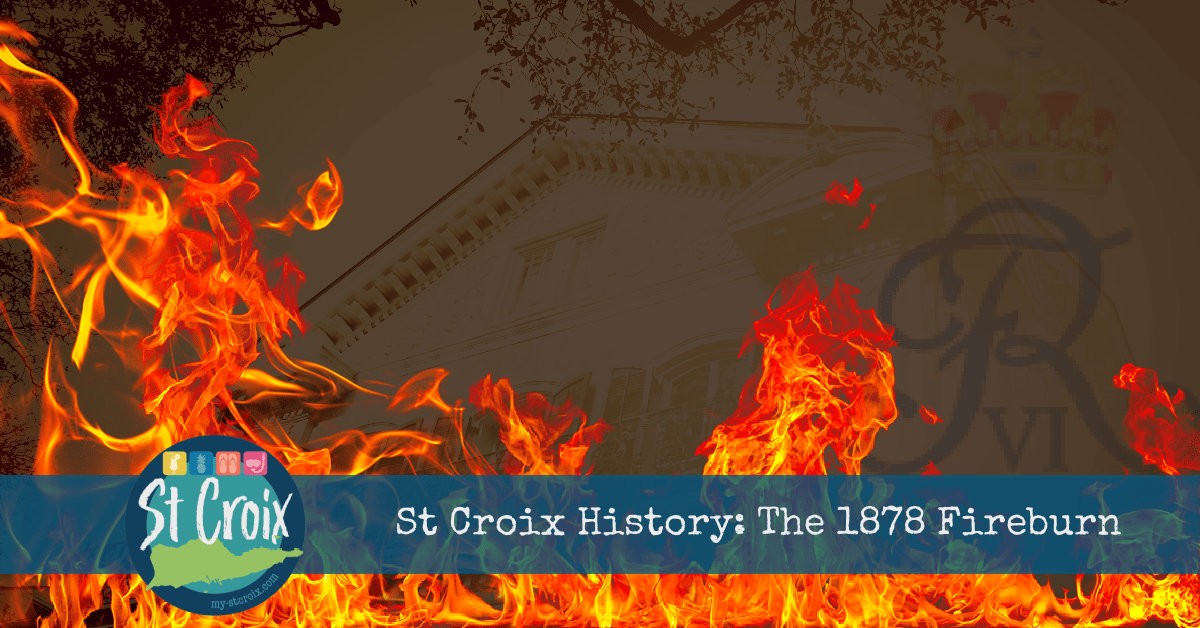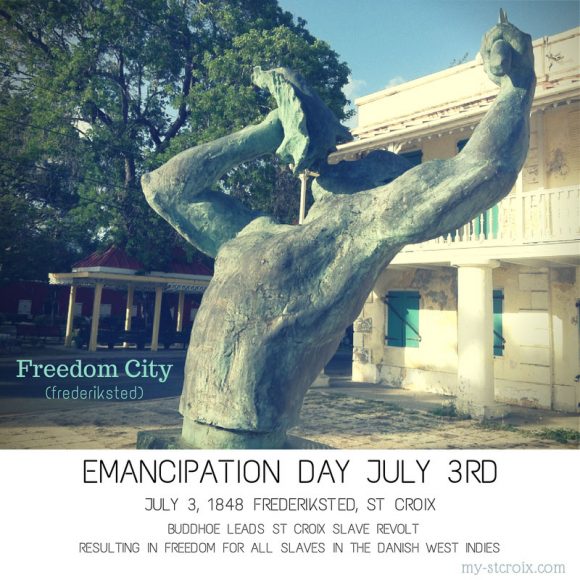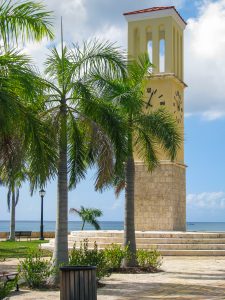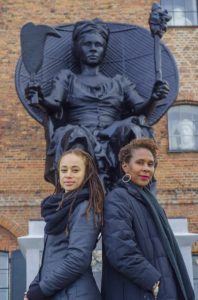
October first marks a dark, yet triumphant day in Virgin Islands History – the infamous St Croix Fireburn or Fyah Burn of 1878. If you are familiar with the US Virgin Islands, you may have heard of the heroines of this day, locally known as “The Three Queens” (actually there are four).
Often they are mistakenly associated with Emancipation Day on July 3rd, but October first is their day. And their story deserves to be told.
While the enslaved people of St Croix gained their freedom without violence on July 3, 1848 – 15 years before the enslaved in the United States were emancipated – they weren’t really free. Instead, they became serfs of the oppressive plantation system. There were no unions to bargain for better wages and working conditions and the power remained in the hands of the plantation owners.

After Emancipation They Weren’t Really Free
St Croix was a Danish colony in 1848 and just a year later, the Danish Government passed the Labor Act [Arbejdsregulativet] of 1849 that regulated that “freedom”. It established a pitiful day wage that was meager at best and stated that jobs (plantation contracts) could only be changed on one day of the year, October 1st.
With little to pay for things, living conditions were not good. The meager wages were not nearly enough to take care of families, let alone medical care. While under slavery, plantation owners had a legal duty to provide care and housing for the old and disabled. After emancipation, those duties were gone. Many of the formerly enslaved, though technically free, were in some ways worse off.
The laborers of St Croix endured oppressive working conditions for thirty years following emancipation until they absolutely had enough.
On “Contract Day” October 1, 1878, many were gathered in the streets of Frederiksted. It was a festive day being the only day of the year that they were allowed to move to a different plantation or get a new job. There were rowdy celebrations and drinking. West Indians have a long tradition of fetes, so you know the scene. Parties and drunken revelry in the streets. Eventually, the police tried to brutally shut it down and in the midst of it all, a farm laborer named Henry Trotman was injured and taken to the hospital. Rumors started flying that he had been killed. Enough was enough. The people started to riot. They were rightfully enraged and the fire was set. They began burning the town and driving the police and soldiers to barricade themselves in Fort Frederik.
Over three-quarters of the plantations on St Croix were burned to the ground. Fields, factories, and homes. The town of Frederiksted lay in ashes. This is why, today, you’ll see that Christiansted has classic Danish colonial architecture while Frederiksted has a Victorian-Era style. It was rebuilt after the 1848 St Croix Fireburn.
The Three Queens (ok Four)
During the rebellion, the Three (actually four) Queens – Mary Thomas, Mathilda McBean, Axeline Elizabeth Salomon known as Agnes, and Susanna Abramson rallied the workers across the island to rise up. They performed rituals during the rebellion to empower their people. They were revered women leaders in their communities who refused to back down though they knew very well what the consequences of their actions could be.

Queen Mary Thomas is the most known through history. She was originally from Antigua and lived at Sprat Hall in Frederiksted. She was unmarried with three children and had been arrested several times for theft, arson, and hurting her children. As was often the case with the treatment of powerful women during the Colonial era, this was more likely an attempt to harass her and discredit her with her people.
Today on St Croix, you’ll find many depictions and references to the Three Queens. You’ll also see the family names of the Queens’ descendants across the island. The iconic Eliza James-McBean clock tower stands at the entrance to the Ann E. Abramson Pier next to Fort Frederiksted.
In the end, almost 100 of the rebels lost their lives with only 3 Europeans dead. Many were arrested. Twelve men were shot to death near the Frederiksted fort, and fourteen women were burned alive in Grove Place for the parts they played in the revolt. The four Queens, Mary, Mathilda, Agnes, and Susannah were arrested and tried in Denmark where they were imprisoned in the Christianhavn women’s prison in Copenhagen. They served part of their sentence in Denmark before being sent back to St Croix to serve the remainder imprisoned in Christiansted.
While conditions improved slightly after the uprising, they weren’t a lot better. Power remained in the hands of the plantation owners and the Danish Government. But, the resilient people of St Croix continued their fight for equality.
The St Croix Fireburn and The Three Queens Today

In 2018, local St Croix artist La Vaughn Belle along with fellow Danish artist, Jeanette Ehlers, exhibited an art installation in Copenhagen, Denmark that culminated with the dedication of the “I Am Queen Mary” statue. It was the first monument to a black woman in Denmark where it presided in front of the West Indian warehouse in Copenhagen as a testimony to the colonial impact the country had on the Caribbean and its people. In 2020, it was heavily damaged in a winter storm. The artists are now working to secure funding to install a more permanent monument in its place. You can learn more about the project at IAmQueenMary.com

Thank you so mush for sharing. There’s so much Caribbean History we (I) don’t know. Thank you!
Wow. Thank you all very much
I am a descendant of an Abramson and know my 4 times great grandfathers name was Peterson and yet my 3 times great grandfather was an Abramson from st croix have read about the fire burn uprising and am interested to know if Suzanne had children any help would be appreciated
Good afternoon Jenny – that is so amazing! The best way to find that information would be through the St Croix Landmarks organization: https://www.stcroixlandmarks.org/research/genealogy/
You may also want to try Ancestry.com but I’m not sure how if the US Virgin Islands records are online. There are Ambramson family members on St Croix as well. If you can reach out to any of them, they may have more information too. Best of luck to you on your geneology journey!